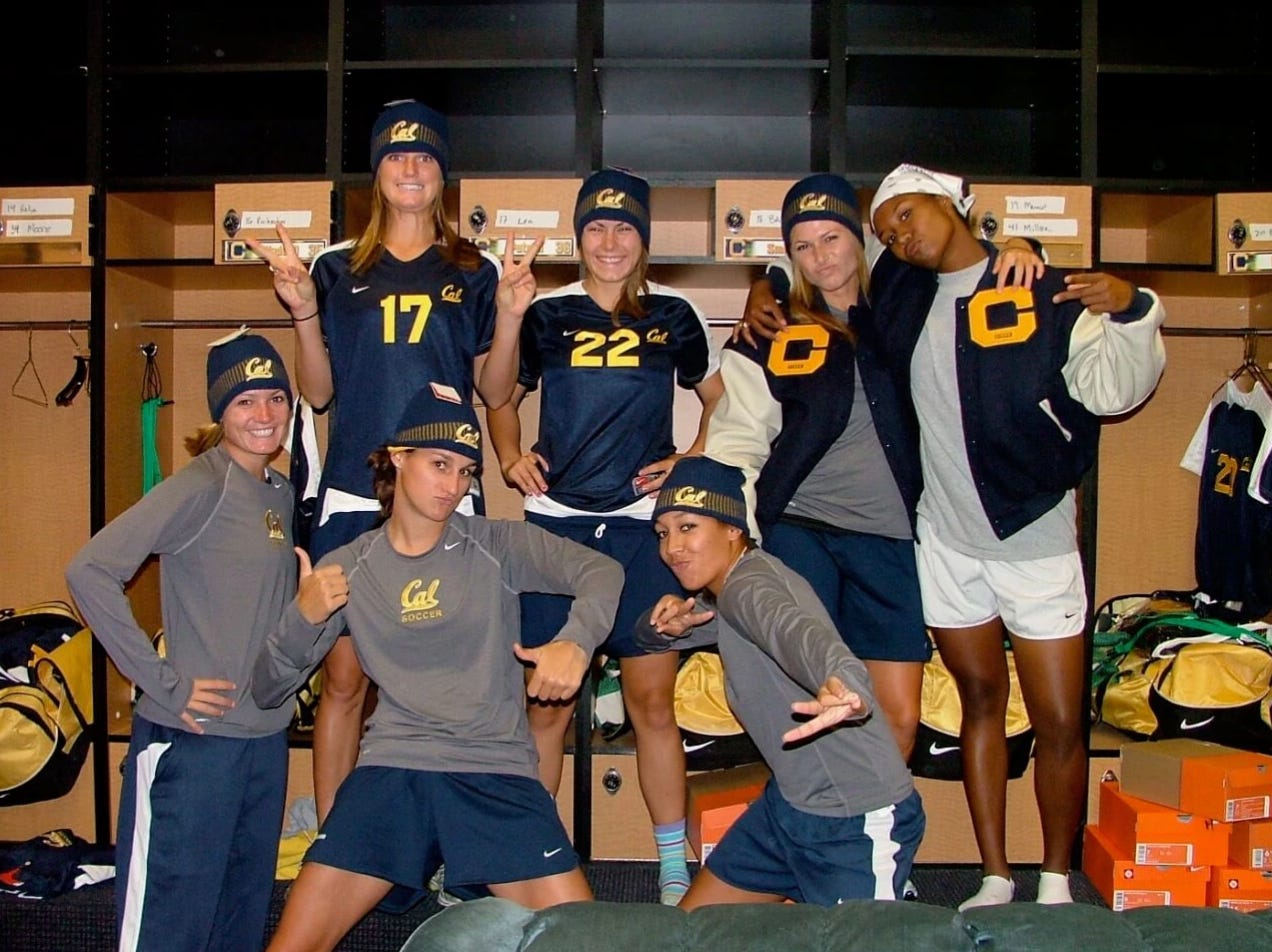I was alone in the net, staring down the Auburn University striker standing 12 yards upfield, heart hammering in my chest. The collected attention of hundreds (ok, maybe like 100) fans were leveled solely on us. I could feel their eyes. So, too, could I hear my teammates cheering from the sidelines, but only faintly. I was dialed in. It was the 63rd minute of the first round of the 2006 Women’s NCAA tournament. On the line was my team’s lead and, with it, our season. We—the University of California Women’s Soccer team—had entered the game ranked 21st in the country. A redshirt sophomore, it was my first collegiate start.
A late bloomer, I’d started playing competitive soccer just five years prior. I was assured, at the time, that this was late—too late—for anyone with ambitions that extended beyond playing in high school. Like playing for a top collegiate program. Such teams and programs are composed of girls with skills honed through hard work and expensive coaching starting when they’re very young. These are girls with perceptible, natural on-field fluency—girls who look like “soccer players.” And I was, to be sure, light years behind them, especially at the beginning. Often awkward, coaches ignored me. I was told that, though I was “athletic,” I lacked the more essential attributes. “You should try something else,” I heard often. Even after it became clear I could stop shots no one else could.
I didn’t listen. The question for me was never, “Should I do this?” Instead, it was always, “How do I do this?” Also: How can I prove everyone wrong?
The way I did that was simple. I took stock of everything I did well—what made me me—and then I set about making the most of those attributes, so I could use them to my advantage. Initially, this meant doubling down on my athleticism.
That didn’t exactly come naturally. I hated being called “athletic,” instead of simply “good.” I saw it, not incorrectly, as a slight. But eventually, I began to see it for what it also was: a differentiator. I embraced it and sought to further nourish it. I learned how to extend my range in the net. I studied how other goalkeepers moved, how they controlled their bodies, so I could assume greater control over mine. I sought out the most talented strikers—including a young Alex Morgan—to push my limits. I focused on my timing, counting how many steps strikers took approaching the ball. I became stronger, quicker, and smarter, too.
It worked. I became great. I was recruited to play at Cal. When that shot came in my sophomore year—a laser high and to the right—I blocked it. I made nine saves that game. We advanced to the next round.
I built a successful fundraising practice—one tailored to help underrepresented and over-ignored people like myself—in precisely the same way. I looked at the world of philanthropy, figured out what aspects of myself set me apart, and I turned those things into weapons. Then, I used those weapons to prove wrong everyone in that world who doubted me.
Now, that’s what I help my clients (and my readers) do too.
And that’s what this newsletter is all about. I’m going to do my best to help you win and overcome whatever odds are in your way by being your most authentic self. I’m going to help you manifest what you know to be possible without compromising what you know you should be.
Ultimately, that’s the only way to do it. To earn a seat at a table where people like you don’t usually sit isn’t a matter of transforming yourself into something you’re not. It’s a matter of doubling down on the skills and traits and abilities that make you something your competition won’t ever be and using them to punch your haters square in the mouth.
If I can do it, so can you.



